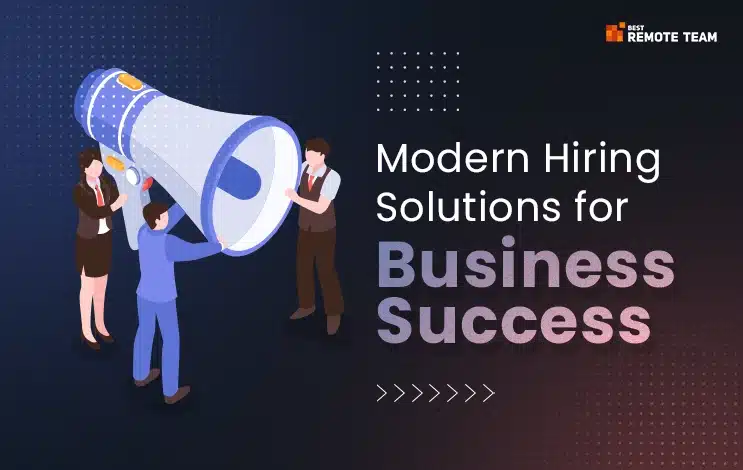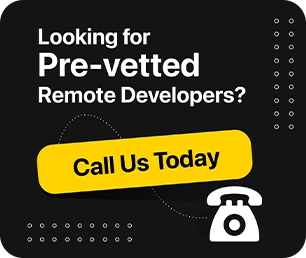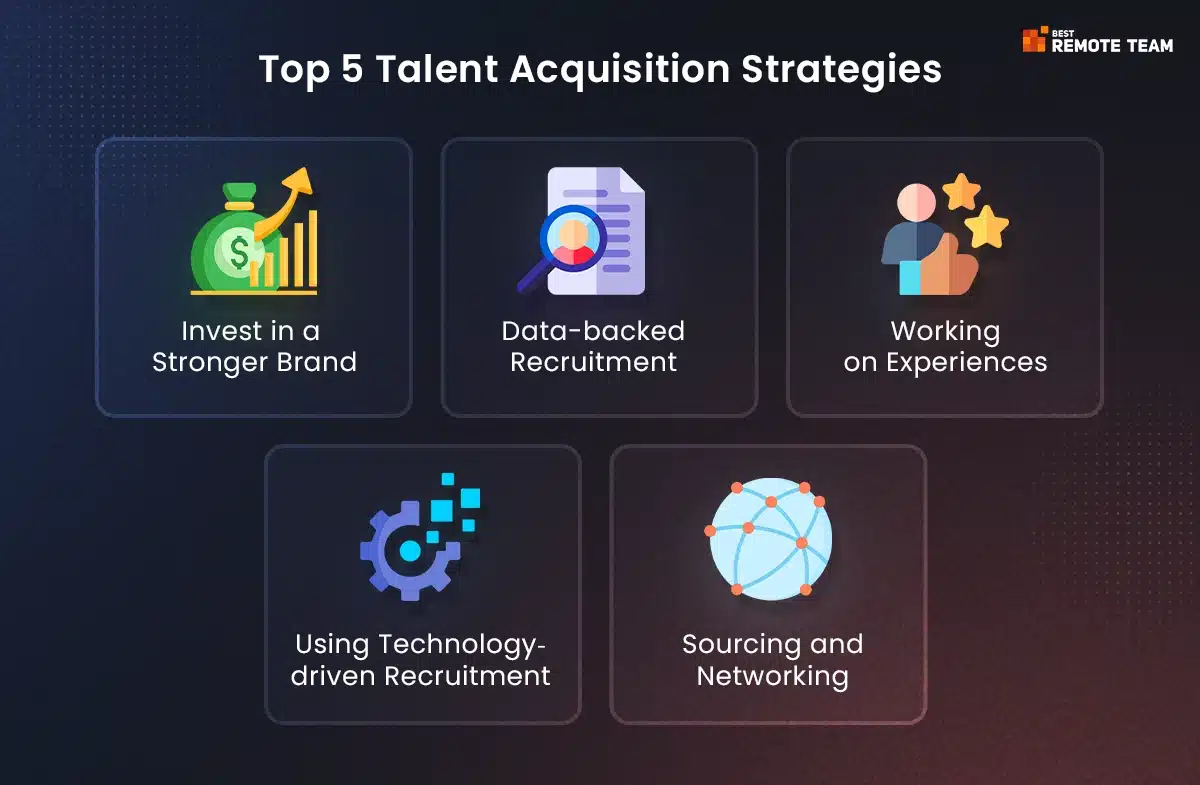Understanding Hiring Challenges
It is crucial to understand the modern hiring environment before we identify the strategies that can help hire the best talent.
1) Changing Workforce Dynamics
There is a lot happening on this ground. There are two sets of people holding onto jobs, the millennials with their established careers holding mid to senior-level positions. And there are the Gen Zs with their tech capabilities, flexibility and diversity. They are digital natives, who are comfortable with remote work.
These two different kinds of people have impacted the work culture and the dynamics. This has led to a business environment that prioritizes tech integration aligned with the culture.
Alongside, the other aspect that has been critically defining the modern workforce is the choice between remote work and hybrid solutions. While a lot of companies have begun recognizing remote work, there are businesses that consider hybrid model as their go-to.
This has also led to an increase in the infrastructure supporting remote or hybrid work. You can check out the modern-day solutions, such as Slack and Zoom for the affirmative on this. It has also impacted real estate, and urban planning, as more people are moving out of their offices and into their choice of locations.
Moreover, companies have started recognizing the need for workplace diversity and inclusion culture. They have started focusing on these aspects while planning employee engagement.
2) Tech Advancements in Hiring
While the workforce mindset is changing, there is another unique shift approaching the businesses. This is the use of advanced technologies, such as AI for hiring talent.
Artificial Intelligence can help your business save a lot of its hiring efforts by screening the resumes and identifying the potential candidate that matches your job description. The algorithm will use keywords from the job description, such as experience and skills to find the ideal person.
Another useful purpose of investing in AI is to match the candidates with the job profile with minimal errors. Chatbots and VA can help you manage conversations without investing in resources for the purpose. You can engage with the candidates in real-time, and ensure maximum engagement.
These tools can also help you predict and prioritize successful conversions, thus reducing the efforts on low-converting prospects.
Apart from the inclusion of AI, the hiring scene has shifted from traditional methods to job boards and social media. Now, you will have a pool of talent on LinkedIn and Glassdoor. There are several candidates who prefer connecting with their potential employers on social media via campaigns and content. The scene has shifted from active to passive recruiting.
Lastly, the application tracking system software has automated several parts of the recruitment process. Additionally, there are software solutions that help with recruitment, onboarding and video interviews. These have eased the entire process and made it efficient.
3) Modern Business Hiring Shifts
We discussed the new-age hiring solutions. Let’s focus on the challenges modern businesses face when it comes to hiring talent, which wasn’t seen earlier.
There is an increased demand for specific skills in the market. People with specific technology knowledge, digital marketing awareness and data science background are preferred over others. moreover, employers need to work on their brand if they want more people to join them.
Business reputation is equally important in motivating the workforce to join them. this includes the positivity in work culture and the competitive salaries being offered. Lastly, the speed of hiring is also posing a challenge. Candidates are overwhelmed by the delayed hiring processes, which makes them move to the next employer immediately.
The modern hiring also requires candidates to invest in continuous learning to upskill themselves. With the tech advancements, new skills are added to the list. This has led to addition of more skills to the talent pool.
You must be ready to invest in training and development of the employees and help them with reskilling themselves. This is an important factor being considered for the modern business hiring. Lastly, it is important for businesses to collaborate with educational institutes to ensure that they offer tailored programs for their candidates. This will also attract more people.
Lastly, the workplace is facing a retention issue. Matching the different viewpoints and expectations of the workforce is equally important, which makes it difficult to retain them. keeping the employees morale high is equally important if you want to ensure their retention. this calls for investing in a positive work environment.
The fluidity of the job market is equally responsible for the retention issues. Better opportunities are paving way for employee attrition.
Top 5 Talent Acquisition Strategies for Business Success
If you want to acquire and retain the talent, you must invest in effective and efficient acquisition strategies. Here are some of the talent acquisition strategies that can help.
1) Invest in a Stronger Brand
As a business, you must invest in a strong brand, which can help attract or retain the talent. While building the company’s brand, you must focus on the culture and the values you extend to the employees.
You should align it with the brand’s values. It helps find the right employees aligned with the mission and values of your organization.
You can use marketing to highlight the brand’s strengths, and employer reviews. You can also maintain a positive reputation using the top review and recruitment platforms, such as Glassdoor and Indeed.
Your brand’s ability to hire dedicated remote developers depends on how you have highlighted your strengths and created the marketing assets.
2) Data-backed Recruitment
It is easy to hire remote developers India; however, it is difficult to hire people who are aligned with your culture and mission. That’s where data-backed recruitment can help. it helps the recruiters make informed decision and ensure a streamlined hiring process.
You can use the key performance metrics, such as time and cost to hire and quality of the hire to optimize the pipeline and make it efficient.
Using Big Data analytics for the hiring process helps predict the hiring requirements and analyze the candidate’s behavior. It can also help you prioritize your recruitment according to your needs.
You can also use technology to analyze the data from diverse sources to understand current hiring trends and the candidate’s closure rate. This will help you plan your resources and allocate them according to your needs.
3) Working on Experiences
The candidate’s experience throughout the recruitment process helps you ensure maximum conversion rate. You should ensure a smooth acquisition and retention process, which can help encourage them to stay with your business.
First impressions matter, and that’s where you must focus your efforts with respect to the candidate’s experience. start by simplifying the forms and improving the mobile interfaces. Keep the instructions clear and precise, which can make the process user-friendly.
You can use effective communication and feedback as a way to effectively hire developers team. Add regular updates and timely responses to the mix, and you would be able to enhance their experience and ensure complete candidate satisfaction while following the process.
You can use this approach to ensure that the company or candidate’s time or effort is not wasted, and you are following the right person.
It is equally important to invest in the retention structure. You must have a smooth onboarding strategy that bonds the employee to the company. You can ensure this occurs by offering the necessary resources and support to the employees.
4) Using Technology-driven Recruitment
Technology has become a game changer in the recruitment process. It has redefined the way we screen people and interview them.
You can use AI tools to ensure smooth resume screening and manage the interview schedules. You can also identify the top candidates and automate the tasks using these technologies. As a result, you can reduce the bias and make the process effective.
The VR and AR technologies can help the employee simulate the workplace and understand their jobs before actually applying for them. the interactive modules will help get a hands-on experience into the process.
Lastly, gamification can help keep the employees motivated and encourage them to stay longer with the business.
5) Sourcing and Networking
It is crucial to source candidates proactively to ensure a continuous flow of candidates. You must have a ready to go pipeline of talent and potential candidates, who can be approached for future openings. This would reduce the time needed to fill up potential positions.
You can use the proactive approaches to segment the active and passive candidates. The active candidates are pursuing the job while the passive ones may have a job and skill but not hunting for another. You might need to look at both pools differently and use unique approaches to manage them.
If you are filling the top talent positions, you might need to invest a lot in networking and referrals. This will help you discover the right talent for your business, and get them when your business needs them.
3 Essential Tips for Navigating Workforce Trends and Requirements
Here are three tips that make adapting to the current workforce trends and requirements easy for your business.
1) Embrace Remote & Hybrid Models
Remote work model is flexible and can enhance the productivity of the employee. A lot of businesses have been able to flourish because of the zero commute time and increased access to a global talent pool. Moreover, you are also able to tap into their work-life balance.
However, remote work may pose hindrance to real-time communication and lead to isolation. You might face difficulties while managing team cohesion. You must invest in the proper practices for communication and reporting. At the same time, you should set clear expectations for performance and accountability.
You can also have your employees check into the actual work spaces once in a while for better cohesion. However, if remote is the only possible way forward, the right infrastructure and technology are important.
You can use Google and Trello to manage collaboration and project management. You can also invest in productivity tools for better management. This way you can accomplish more with your remote workforce.
2) Emphasise Diversity, Equity and Inclusion
You must focus all your efforts on implementing a workforce that brings forth different perspectives that further innovation. Diverse thinkers in a single team can boost creativity.
You can also use the diversity in the team to understand the customer’s requirements better and improve the employee satisfaction rate. Diversity can also help improve the engagement levels in the company and make the employees feel valued via an inclusive environment.
When you are investing in DEI (Diversity, Equity and Inclusion) hiring approach, you must align the process with the objectives. Make sure to use varied job boards and outreach solutions to get the right talent pool for your business.
The hiring panels must be equally diverse and inclusive. Make sure to provide your hiring team an insight into the DEI processes and use inclusive processes to pursue to the right talent. Set the DEI goals and monitor them continuously to increase accountability and enhance the processes.
When you are applying this approach, take into consideration the unconscious biases as well. this can impact the DEI hiring process. So, the best approach is to introduce the approach, use proper training methods and leverage the tools that can effectively identify the biases.
3) Upskilling and Reskilling Employees
This tip will help you find people with the right skills and upskill existing people for increased retention. It promotes continuous learning, which can help your workforce get an edge over other candidates and improve your business prospects.
By investing in upskilling or reskilling, you will stay abreast with the latest trends and technologies. It can also further the employee’s performance and add to their career growth. Moreover, you will be boosting their morale as a result.
You can also use this approach to invest in skills that are not available in your existing team. You must conduct skill assessment that can help understand the areas where the employee needs to work for better development. You can also use the organization’s goals with the skill assessment to define the skills that need to be added to the team.
It is equally crucial to invest in the right upskilling programs for effective upskilling. You must continuously invest in the right learning styles for effective learning solutions. Make sure to add incentives to your program so that the candidates are motivated to complete them.
The Future of Recruitment: Trends Transforming Recruitment for Business Success
Let’s look at the future trends that will make the hiring processes easy and effective for your business. these are trends that you must invest in the future for streamlined processes and effective recruits.
1) AI and Automation in Recruitment
While AI has already begun enhancing the recruitment processes, investing in AI and automation can improve efficiency. In the near future, you can use predictive analytics to forecast your hiring needs. the data trends will help you identify the people you will need in the business going forward.
This can help you interact with the right candidates. For this purpose, you can use AI-based chatbots, which can help with conversations and scheduling.
When you add Machine Learning to the mix, you will note that your processes can identify the right candidates without biases. It will also help you find the right talent with greater accuracy.
Did you know 59% of HR decision-makers plan to increase their investment in AI in 2024.
There are a few things to keep in mind when investing in automation. While the mix of AI and ML can help you gather the initial candidates, it is the human eye with empathy that can make the right judgment. Make sure to prioritize human intervention while making the decisions. This will ensure you make fair and satisfying decisions aligned with your company.
You should also incorporate the data privacy regulations while focusing on AI to collect data and analyze them. make sure your services adhere to the guidelines, such as GDPR. You must also ensure complete ethical considerations when planning the AI algorithms. You can also use ethical practices while conducting recruitment and fostering trust throughout the process.
2) Gig Economy with Freelancer Approach
The gig economy is on the rise, which is majorly driven by technological advancements. A lot of people have become independent contractors using the freelancer model. This may offer flexibility to the candidates, and help the business acquire crucial skills that they require. You will notice that the combination has furthered the industries, such as healthcare and retail.
It is easier to hire via the freelancer model, and you don’t need to work on retaining them. moreover, it reduces the infrastructure and other overheads for the business. freelancers offer the specific skills your business lacks with greater agility.
You must work on successfully integrating the freelancers into your work model by defining the expectations and roles. You must have a defined communication protocol as well, which can help with effective collaboration.
Lastly, make sure to create a sense of belonging for the freelancers that helps with a positive work relationship.
Conclusion
Navigating the modern hiring challenges can help businesses embrace new-age solutions and creative processes. You can ensure moving further with the right trends and technologies.
For instance, remote work can help you acquire talent from across the globe with less overhead. You can use AI for smarter hiring and use the DEI approach to hire an inclusive workforce. These approaches will also help you attract the right talent and stay competitive in the changing workforce environment.
Continuous upskilling and enhancing the onboarding experiences can guarantee good retention for the company. It is crucial to employ a proactive approach to stay agile and responsive while recruiting.
Best Remote Team helps you stay at the top of your recruitment processes with the right team and services. Get in touch with our team if you want to seek consultation on the best hiring approaches and top ways to find a candidate for your business.





